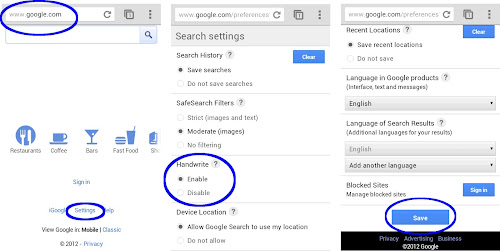This blog post was first published by The Age.An all-too-common response to calls for investment in faster Internet is a derisory snort that hardly anyone needs to watch more videos online. We still imagine the Internet as it was 5 years ago, when it admittedly had the mental age of a smart adolescent. I’d argue that since then it’s worked its way towards its graduate degree and we should take a fresh look.
All culture is becoming Internet culture and that’s changing the economics of mass media and high culture. It’s no longer an either-or choice between The Shire and Four Corners -- or at least technological constraints that used to force that choice have vanished. That also changes the arithmetic of investment in the Internet, from one of business logistics to one of culture.
Look at what happened on Saturday which was available to all Australians with a reasonably fast Internet connection: thanks to Deakin University and Fairfax, our Prime Minister dialed into a
Google+ Hangout for a video conversation with the nation. We had all been able to pose questions before, and 9 people joined her on the Hangout from their own computers, and the rest of us could watch and discuss on social media. The PM also took some questions asked on Twitter, Facebook and Google+ during the Hangout. This was a big moment in the evolutions of politics and the Internet.
In 2007, it seemed cool enough when Google engineers were capable of putting together a special page to track Australian federal election news and results. In 2008, Barack Obama’s use of Facebook and YouTube seemed to not just freshen his image but to give him a tactical edge over John McCain. In 2010, the use of YouTube to put
Australian election coverage in the hands of the young seemed like a big deal here. Now, in 2012, it’s not enough for people to watch YouTube videos of the U.S. president or Australian prime minister answering their questions; they are now participating in videoconferences live with their leaders. The age of soundbites broadcast over mass media is giving way to an era of close interactions between politicians and voters that go anywhere the Internet does.
We’re seeing similar forces in education and the arts. When I tell you that Chris Tisdell recently passed a million views of his videos on YouTube, visions of toddlers or cats falling off things probably float in front of your eyes. Professor Tisdell drew those millions by recording his mathematics lectures to students at the University of New South Wales.
“This video gently introduces the concept of a partial derivative,” reads one video’s description, which wins the comment, “You are a good instructor. You are clear, concise and your preplanning is impeccable.” If you’re familiar with either YouTube comments or the average student’s appreciation for mathematics, your jaw just dropped.
Great teachers make for great teaching, and technology can’t change that. It can extend the reach of those teachers. Most of Prof. Tisdell’s audience aren’t even in Australia, but in India and the U.S. (Education is already the third-largest Australian export; imagine the possibilities to our economy if we use the Internet to continue to grow our reputation for excellence.) Sadly, many Australians have less access to Prof. Tisdell than foreigners do. Australia has the second-highest proportion of smartphone penetration in the world but over half a million Australians still struggle to check email on slow dial-up connections. This is the country that was visionary enough to develop the School of the Air over short-wave radio. That same vision implies that the Internet has to be a major part of any educational investment -- broadband is bringing a thirsty audience to education from all over.
That applies not just to education, but to the humanities as a whole. The Australian cultural industry looks very different on the Internet from the one I grew up with, the one that caused hand-wringing as to what was truly Australian culture and how to protect it from foreign imports. When it comes to online video, Australia is a net exporter. Without any subsidies to push this forward, Australian online videos get more views outside Australia than foreign videos get within Australia. The Sydney Opera House speaks of the Internet as its eighth stage, allowing it to send entire performances to anyone with an Internet connection for less money than it would cost to send them a ticket.
I’d also like to note that it’s remarkable to me that professors, artists, musicians and politicians are seizing this opportunity so much more quickly than a lot of the business community. I frequently get the impression that the Internet isn’t serious enough for hard-headed businessmen. I wonder where they go for their partial-derivatives lectures.
One way to frame this is to say that broadband capable of transmitting video has vastly increased the returns of investment in broadcasting knowledge and ideas. The Internet, so long viewed as a distraction from culture, is now allowing culture to compete more effectively with distractions. As a country and as a community, we need to make similar investments to ensure no one gets left out.
Posted by Nick Leeder, Managing Director, Google Australia & New Zealand






